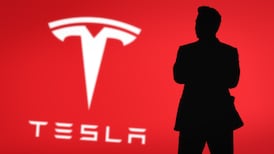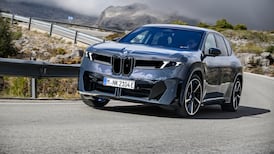Q: Do you have any EV recommendations for a car that can regularly do the Limerick to Dublin round-trip (eg 400km of mostly motorway) as part of a work commute (with no charging at workplace)? I currently drive a 2014 BMW 5 series estate which can do 1200km on a full tank, so I’m wondering should I stick with that for another two to three years in the hope/expectation that battery technologies and ranges improve further so that I can do a 400km round-trip without stopping & charging. – S Keyes, Co Limerick
A: There are lots. Not being able to charge at work does make this slightly more tricky, as that would turn a conundrum into a simpler solution, but even so, there are a great many electric cars that will make this journey.
According to our calculations (using Apple Maps), it’s 186km from Limerick city centre to the Red Cow junction on Dublin’s M50 motorway. Obviously, you might need to travel a little further at either end, but that at least gives us a basic figure to work from and it chimes with your circa-400km round-trip estimation.
Going off the official WLTP ranges, there are a huge number of EVs, even down to the affordable MG 4 hatchback (450km range on one charge) which would do that journey without stopping, but of course that’s not a realistic figure, and it’s especially not a realistic figure for motorway driving.
READ MORE
Assuming you’re cruising at a steady 120km/h, motorway driving is the worst possible environment for an electric car – it’s just a steady, unstoppable drain on the battery, with very little slowing down which would allow you to trickle some energy back to the battery from the regenerative braking.
Worse still, a car’s drag increases at the square of its speed, so travelling at the legal limit means pushing an awful lot of air out of the way. You could slow down, and creep along at 80km/h in the inside lane (Mk1 Nissan Leaf owners know all about this technique) but who’s got the time and patience for that?
There is an obvious, elephant in the room answer here: the Tesla with a claimed 702km range and which has its own private rapid charging station at Birdhill services, just outside Limerick, should you need a quick top-up en route.
Although SUVs are generally bad when it comes to aerodynamic drag figures, the Skoda Enyaq Coupe could be a good choice here. It’s better looking and nicer inside than its Volkswagen and Audi cousins, and on a full charge it has a claimed range of 585km.
In our real-world experience, with similar motorway mileage to do, the Enyaq Coupe should cover between 450-500km on a charge, so it certainly fits the bill (although you might fancy a stop at Junction 17 or at Barack Obama Plaza for a quick 20 minute top-up just for safety’s sake on the way home – not a bad idea for any of the cars we’re recommending here).
We can do better, however. If you fancy a like-for-like replacement for your BMW 5 Series Touring (one of our very favourite cars) then there is the BMW i5 eDrive40 Touring, which boasts a range of 560km on official figures.
Now, during our epic drive from Munich to Dublin, we found that the realistic motorway range of the i5 Touring was between 380-420km, although that was at French and German motorway speeds, not Irish. Either way, you’ll probably need a top-up charge on the way home, but the i5 is lovely to drive and has a fabulously comfortable interior (and we put almost 1,200km on our test car in less than 24 hours).
There are easier options, however. Still fancy a big, comfy estate? Get a Volkswagen ID7 Tourer, which is hands-down one of the most refined and relaxing cars we’ve ever driven, and which even in frigid conditions will easily cover 450km at motorway speeds on one charge, and more than that if you can precondition the cabin before you leave in the morning.
There’s an even-longer range version coming soon, which stretches the range of the current 77kWh battery model from 601km to 683km thanks to an 82kWh battery. That one should easily do a realistic 550km between charges, which will make your Limerick-Dublin-Limerick run a doddle.
If an estate isn’t a deal-breaker, however, there’s a potentially even better option – the Hyundai Ioniq 6. The styling isn’t to everyone’s taste, but there’s method in Hyundai’s design madness. That shape makes the Ioniq 6 incredibly aerodynamically slippery at motorway speeds, and so the long-range 74kWh model, with its quoted official 614km range, will easily manage 550km in real-world driving. Better yet, the Hyundai has ultra-fast 800-volt charging, so you can potentially top it up from 10-80 per cent charge in less than 20 minutes when you need to.
[ BMW i5 Touring road test: the 1,200km electric car drive from Munich to DublinOpens in new window ]
So, we’ve given you a few options there, and if you want a final, that’s-the-one-we’d-buy-with-our-own-money recommendation? It’s the Hyundai.
On the final part of your question, about the potential improvements in battery technology – yes, those are coming, and yes there is the possibility of solid-state batteries which can be rapidly charged-up (less than 10 minutes charging) and which could promise 1,000km-plus ranges.
But that tech won’t be on the road for at least another three-to-four years, and then it will be only for the most expensive and high-tech cars, and will take a while to trickle down to more affordable models.














